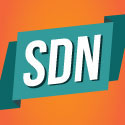Move to virtualization seen as key to faster service deliver, collapsing of silos, delivering video from the cloud and more.
May 6, 2015

CHICAGO -- INTX -- Software-defined networking's overall promise for the cable industry is faster service delivery and network simplicity but there are still many differing views of how the move to virtualization will play out in the cable world, a panel of experts indicated here Tuesday.
From eliminating video delivery silos, to virtualizing home networks, to moving some core functions into the cloud, SDN and virtualization in general have some obvious benefits -- but equally as obvious are its challenges. Like telecom operators, cable companies need to carefully manage the transition away from purpose-built hardware and integrated software to the realm where value is delivered in software and hardware is more generic.
Done correctly, SDN will allow cable operators to create service delivery mechanisms that work even as the cable physical plant evolves and the definition of what is a service changes, noted Comcast Corp. (Nasdaq: CMCSA, CMCSK)'s Nagesh Nandiraju, director of network architecture. As the number of devices in the home explodes and consumers expect to receive video on all of those devices, cable operators are looking at new access technologies and need to evolve past specific silos that deliver content to each individual network.
"We want to build flexible infrastructure and platforms that are agile and not limited to one application," he said. "And we need to be cognizant of what is coming and how platforms will get us there in the shortest amount of time. And we need to leverage cloud and mobile technology advancements."
The original definition of SDN -- the separation of the control and data planes -- has evolved in the cable world to more of a focus on service creation and orchestration, with one big payoff being to more quickly turn up services across different access platforms and service silos, said Karthik Sundaresan, CableLabs principle architect. He'll be speaking at next week's Carrier SDN event in Denver.
"SDN means a lot of things to a lot of people but to me, it's about having a programmable network," Sundaresan said. Cable operators will be able to move away from having to deal with individual devices and command line interface (CLI)-based programming changes to focus more on service creation, using SDN as the abstraction layer and delivering a single app across multiple access platforms.
Want to know more about SDN deployment plans? Hear keynotes and panels devoted to this topic at Light Reading's Big Telecom Event on June 9-10 in Chicago. Get yourself registered today or get left behind!
Sundaresan sees the cable industry capitalizing on the work of the IETF and Open Daylight to use Yang information models and common languages such as Netconf or Restconf in implementing SDN. CableLabs has already worked to incorporate the necessary support for Docsis 3.1 into ODL's second generation SDN controller, Lithium, he notes. That would potentially enable Docsis 3.1 profile management to become a function that runs in the cloud and pushed out to the necessary devices.
There still needs to be work done on northbound interfaces for open source SDN into Metro Ethernet Forum-supported Ethernet services and that work is ongoing, he noted.
His colleague at CableLabs, James Kim, explained how service chaining within the virtual realm -- building functionality based on tying together different virtualized functions -- can be used to address home networking needs, and deliver options such as parental controls, firewalls and more. By breaking down services into separate functions such as deep packet inspection, network address translation and access control, cable operators can use service chaining to knit together services based on user demand instead of having specific appliances deliver them individually.
Kim said, however, that this is going to require changes to the in-home hardware used today and decisions about where within the typical traffic flow the necessary service delivery information will reside.
— Carol Wilson, Editor-at-Large, Light Reading
You May Also Like








